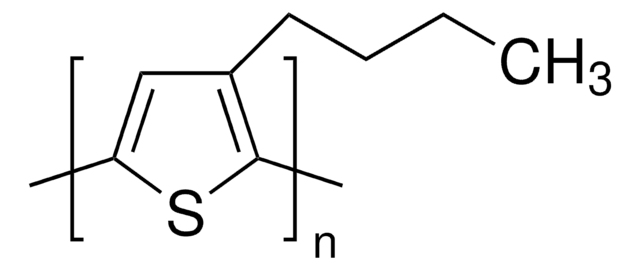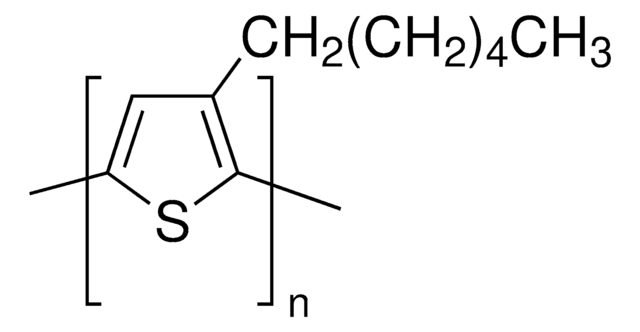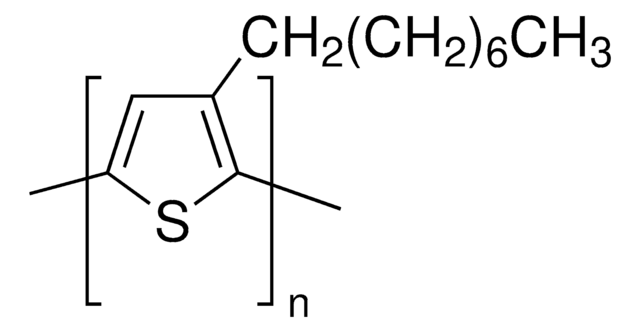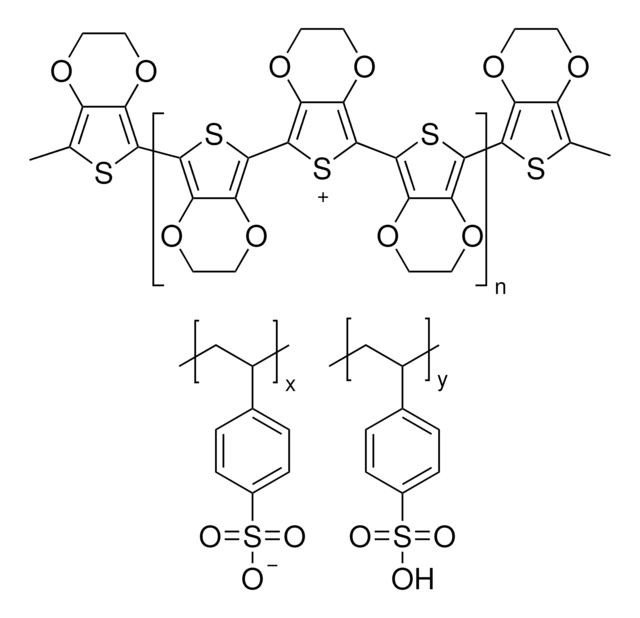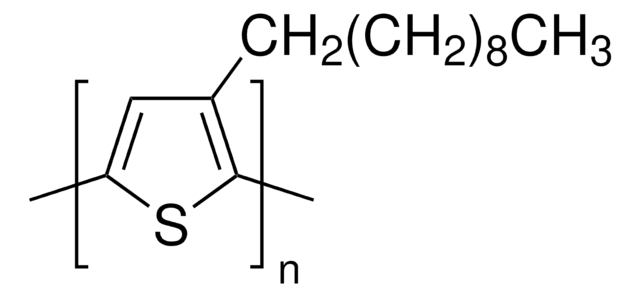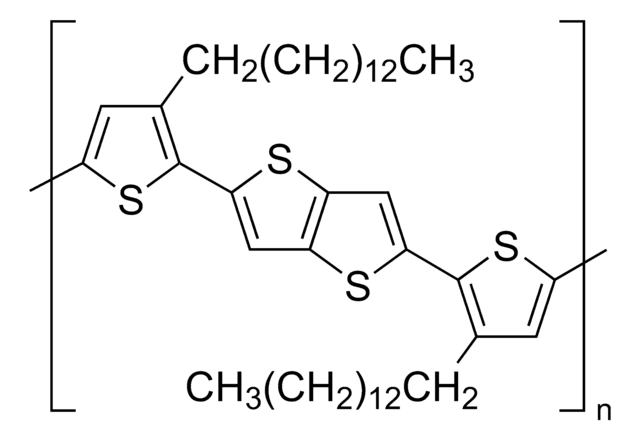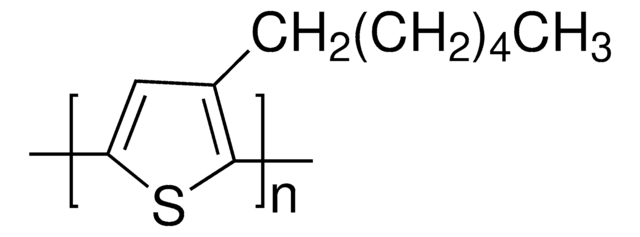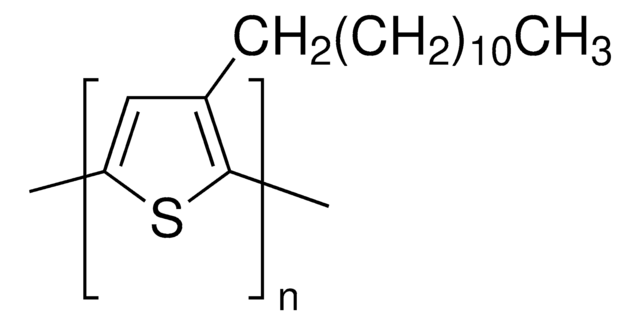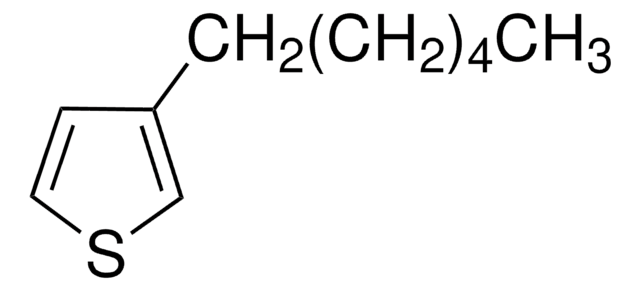682799
P3OT
regioregular, electronic grade, 99.995% trace metals basis, average Mn ~25,000
Sinónimos:
Poly(3-octylthiophene-2,5-diyl)
About This Item
Productos recomendados
Materiales
black
grado
electronic grade
descripción
Band gap: 1.7 eV
Ensayo
99.995% trace metals basis
Formulario
solid
mol peso
average Mn ~25,000
mp
198-211 °C
Energía orbital
HOMO -5.25 eV
LUMO -3.55 eV
rendimiento de la unidad OPV
ITO/PEDOT:PSS/P3OT:PC61BM (1:2)/LiF/Al
propiedades de los semiconductores
P-type (mobility=10−4 - 10−1 cm2/V·s)
cadena SMILES
[s]1cc(cc1)CCCCCCCC
InChI
1S/C12H20S/c1-2-3-4-5-6-7-8-12-9-10-13-11-12/h9-11H,2-8H2,1H3
Clave InChI
WQYWXQCOYRZFAV-UHFFFAOYSA-N
Descripción general
Aplicación
Rechargeable battery electrodes, electrochromic devices, chemical and optical sensors, light-emitting diodes, microelectrical amplifiers, field-effect transistors and non-linear optical materials.
Used in organic field-effect transistors and in polymer-based solar cells.
Características y beneficios
Código de clase de almacenamiento
11 - Combustible Solids
Clase de riesgo para el agua (WGK)
WGK 3
Punto de inflamabilidad (°F)
Not applicable
Punto de inflamabilidad (°C)
Not applicable
Equipo de protección personal
Eyeshields, Gloves, type N95 (US)
Elija entre una de las versiones más recientes:
Certificados de análisis (COA)
¿No ve la versión correcta?
Si necesita una versión concreta, puede buscar un certificado específico por el número de lote.
¿Ya tiene este producto?
Encuentre la documentación para los productos que ha comprado recientemente en la Biblioteca de documentos.
Los clientes también vieron
Artículos
Organic polymer semiconductors are key materials for research in organic electronics. Efforts to develop field-effect transistors (FETs), plastic solar cells, organic RFIDs, and electrochemical sensors all depend on availability of reliable organic semiconductors with choices of different molecular architectures and consistent quality. Sigma-Aldrich is pleased to offer these conjugated polymer semiconductors.
Polymer-based Materials for Printed Electronics: Enabling High Efficiency Solar Power and Lighting
The application of conducting polymers at the interface with biology is an exciting new trend in organic electronics research.
Optoelectronic Devices Based on Diketopyrrolopyrrole (DPP)-containing Conjugated Small Molecules
Nuestro equipo de científicos tiene experiencia en todas las áreas de investigación: Ciencias de la vida, Ciencia de los materiales, Síntesis química, Cromatografía, Analítica y muchas otras.
Póngase en contacto con el Servicio técnico